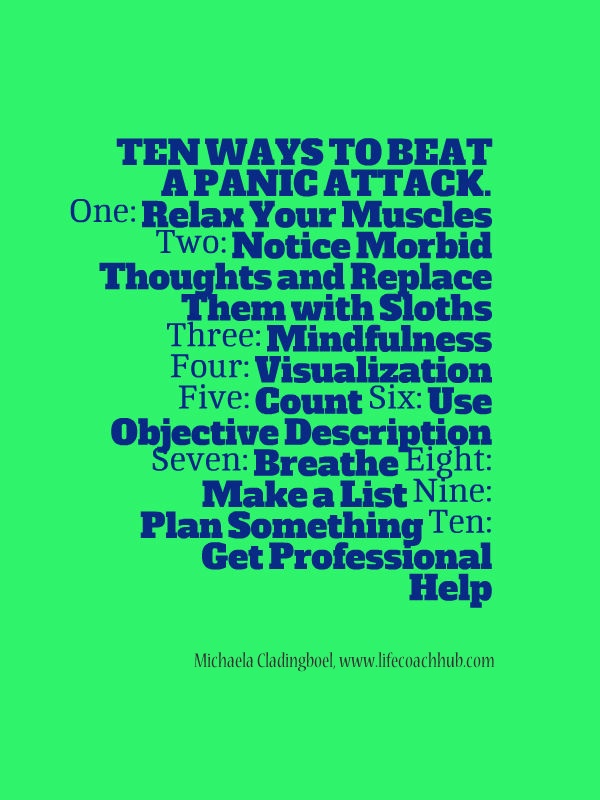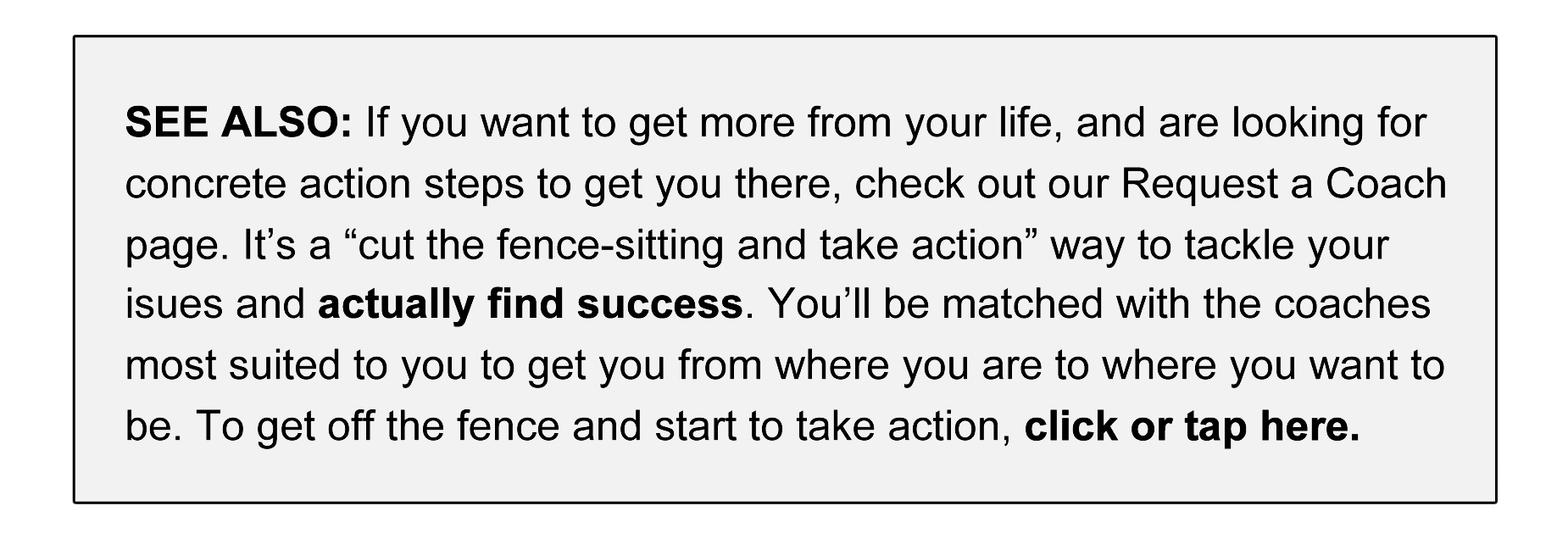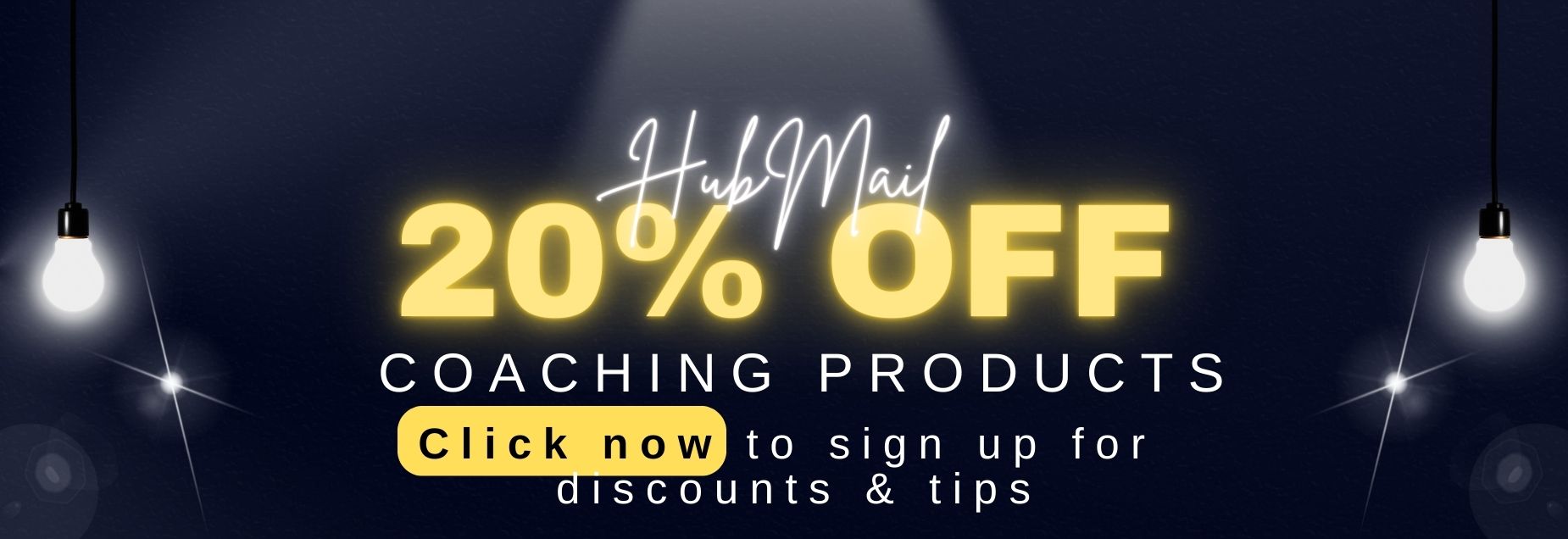
When panic and anxiety strikes, it's the primitive, fight-or-flight part of our brains overreacting to what it sees as a threat. Two important parts of your brain that play a big part in keeping you alive are your frontal lobe, which is where your rational decision making is done, and the amygdala – two small clusters of cells that sit approximately behind your ears on each side of your head.
The amygdala’s job is look out for cave lions, because back in more primitive days, cave lions were a regular feature of the landscape and they could kill you. All day long your frontal lobe and amygdala are constantly chatting to each other.
Amygdala: “See a cave lion?”
Frontal lobe: “Nope.”
Amygdala: “See a cave lion?”
Frontal lobe: “Nope.”
Amygdala: “See a cave lion?”
Frontal lobe: “Nope.”
And so on, at least until your frontal lobe does spot a cave lion. Then it’s more like this:
Amygdala: “See a cave lion?”
Frontal lobe: “OMG YES I SEE A CAVE LION AND NOW WE’RE ALL GOING TO DIE!”
At this point the amygdala swings into action. It sends messages all through your brain and body. It tells your digestion to shut down. It tells your brain to produce adrenaline and cortisol. Then it tells your frontal lobe to take a break.
All this makes sense if you think about it. You don’t need to digest food while you’re trying to stay alive, adrenalin makes you faster and stronger, and cortisol shuts down your immune system so you can do crazy things with your body that you normally wouldn’t do. And there’s no need for that pesky frontal lobe – when faced with a cave lion, you don’t want to be thinking long enough to decide between running over there or climbing this tree. You need to react on instinct, and that frontal lobe just gets in the way. So your decision-making ability becomes impaired, allowing your flight or flight instinct – the fear response – to take over to save your life. You run away, you fight the cave lion, or you’re lunch.
Simple.
Except that these days we’re not running away from cave lions. For most of us, the kinds of threats our frontal lobes perceive are things like:
- Having to talk in public
- Loss of income or reputation
- An unpleasant boss
- Rhe cafe not having our favourite muffin
I think it’s fair to say that none of these are likely to kill you. Our frontal lobes, though, don’t know the difference between a disappointed expectation and a cave lion. So when you find out your favourite lunch venue is closed for refurbishment, your brain might perceive that as a threat you need to kill, or run away from at high speed. Either way, it’s an overreaction to something that wasn’t truly a threat in the first place.
Brains aren’t very smart. And when this process of OMG THERE'S A CAVE LION is constantly being triggered, we suffer anxiety and sometimes panic attacks. So here are ten things you can do for yourself to help turn that frontal lobe back on, and calm your amygdala down:
One – Relax your muscles
When we panic, our bodies tense up, ready to spring into action to run away from that cave lion, or kill it. If you can, find somewhere to sit or lie down. Starting at your toes, concentrate on tensing the muscles (scrunch those toes right up), hold them in that position for a few seconds, then relax them.
Now move on to your calf muscles, and repeat the process. Continue up your body, tensing and relaxing groups of muscles as you go. Don’t forget to do your face, no matter how silly it might feel.
This achieves a couple of things. The concentration required forces your frontal lobe into action, stopping that amygdala hijack. It also forces your body to relax, giving your brain a clear message that the pesky cave lion has gone.
Two – Notice morbid thoughts and replace them with sloths
Sometimes when we’re fighting off panic and anxiety, our brains fill with morbid thoughts. We call these “persistent” morbid thoughts, because they’re usually imaginings of highly unlikely, tragic events that might happen in the future to ourselves or the people we care about, and they can be hard to get rid off.
These thoughts are one of the warning signs for the onset of my own anxiety – when I get them, I know I need to work extra hard on my anxiety-reducing strategies, because stress has increased.
These morbid thoughts most often happen at night, when we try to go to sleep. During the day our brains are occupied, distracted by our daily lives. However, in bed, in the dark, we clear our minds of these distractions and sometimes morbid thoughts rush on in to take up the space.
The first step to dealing with these is to notice them. Start looking at your thoughts on a regular basis. What am I thinking about? Is it reasonable to be thinking about this? Is it making me fearful? If so, gently push the morbid thought away, and – and this is the important bit – replace it with another, more positive, thought. It’s not enough to just push the morbid thought away – it’ll come straight back to fill the empty space. Think instead about something that makes you feel good; your favourite television show, your pets, a place you went on holiday. If the morbid thought comes back, stop, notice it, push it away again, and replace it again with happier thoughts.
It takes practice, but this strategy can be very helpful. The first and most crucial step is noticing your thoughts. That takes practice too, but soon it becomes a very healthy habit.
Three – Mindfulness
Mindfulness is all the rage at the moment, and for good reason. Most of us spend the majority of our time either looking back at the mistakes of the past, or looking at the future, thinking about what’s happening tomorrow, next week, next year. The majority of us aren’t paying that much attention to the present. Mindfulness is connecting with the present, being aware of your thoughts and sensations right now.
To practice mindfulness, I recommend that you close your eyes, and think about what you can feel against your skin. What you can feel under your feet. What you can hear. Think about listening to your own breathing. Now what thoughts are going through your brain? What emotions are you feeling? Open your eyes and take in what you can see.
Mindfulness activates the brain in a similar way to meditation – and demands your frontal lobe’s full attention, shutting down the amygdala.
Four – Visualisation
Visualisation is a close relative of mindfulness. This strategy, though, activates your imagination. First, think of a place where you feel calm, happy, and safe. It might be your lounge room as a child, the beach, a forest; it’s specific to you.
Now close your eyes and imagine that in front of you is a lift. The lift door opens, you step in, turn around and doors close. You watch the lights in the floor buttons go slowly 15, 14, 13, 12, 11, 10 slowly down to Ground. When the lift gets to Ground, the lift doors open, and you step out into the place where you feel calm, happy, and safe.
Stand there for a minute. Breathe in and out. What can you see? What can you smell? What can you feel? Once you’ve been in your safe place for a minute, and you feel calm, step back into the lift. The lift doors close and the floor button lights go slowly from Ground, 1, 2, 3, 4, all the way back up to 15. At 15, the lift doors open and you step back into the present. Open your eyes. Notice how calm you are. Now you can take that safe place with you wherever you go.
Five – Count
Yes it seems ridiculous, but if you feel panic start to rise, count something. I remember being at a funeral and I realised I had instinctively begun counting the ceiling tiles of the church. Part of my brain knew what to do to get control of my frontal lobe again. Counting is something you do with your intellect, your frontal lobe – so it gets control of your rational brain again and stops that amygdala hijack.
Six – Use Objective Description
This strategy has a number of different names but Objective Description is exactly what the name suggests, and works in a similar way to counting. When you feel your amygdala start to kick off, examine your surroundings, and describe them to yourself in non-judgemental, unemotional words. If you’re not alone, do this exercise in your head, to avoid stares from strangers. I
t’s very important that you choose objective, neutral language in your description; for example, you don’t want to say “I see a messy desk, full of junk”. Replace that judgemental language with “I see a wooden desk; on it are seven piles of paper, a half full coffee mug, a piece of yesterday’s pizza, and my cat.” The act of carefully choosing those neutral words triggers activity in your frontal lobe, and the amygdala’s hijack is defeated.
Seven – Breathe
One of the things panic does to our bodies is it makes us breath shallowly. This can be useful if we’re about to fight a predatory mammal but doesn’t help us in a panic attack. There are plenty of variations on the breathing exercise theme, and I recommend that you try a variety of techniques, to find the one that works best for you. The first thing to understand about breathing when panicking is that we forget to breath out fully, and this lack of being able to get a good lungful just adds to our distress. It’s like trying to blow more air into a balloon that’s already full.
So first, exhale, slowly and deeply. Then do the exercise that suits you. I inhale as slowly as possible through my nose, hold the breath for as long as I comfortably can, then exhale out of my nose, taking as long as possible. Doing this three times does a number of things; I’ve had to concentrate (hello frontal lobe, goodbye amygdala), I’ve filled my lungs and therefore my brain with helpful oxygen, and I’ve stopped the cycle of shallow breathing that adds to the panic. You can do this anywhere at any time and nobody will be the wiser. It’s a great secret weapon against those cave lions.
Eight – Make a list
With anxiety often comes a feeling of loss of control. You have seventeen hideous scenarios sloshing around in your head – or perhaps just feel anxious with no specific trigger – and you don’t know how to make it stop. You feel helpless. This just adds extra cave lions to the pack your amygdala thinks it’s seen and is very unhelpful.
One of my favourite techniques to manage a panic attack is making a list. It can be anything at all – shopping, who to invite to a party, who to send Christmas cards to, your to do list.
What it is doesn’t really matter. This technique does two things; 1. it turns on your frontal lobe by forcing you to decide what’s on the list, so shuts up your amygdala, and 2. it takes a load off your memory. Did you know that the average person can only remember a maximum of six things in their short-term memory? (Or if you’re like me, minus three). So making lists also takes the stress out of remembering things.
Keep something to write lists on next to the bed for the next time you have insomnia. You’ll be amazed at the feeling of control making a simple list can create.
Nine – Plan something
This technique works in the exact same way as making lists above, but is a much larger endeavour, as it requires more than just one list. This can be a helpful technique for anxious children, to create the feeling of control. Get them to plan their next birthday party, for example.
In addition to the advantages that apply to lists, this technique also helps reduce the stress that large projects can create. It’s a truism that often, the anticipation of an event is worse than the event itself. So to help manage the anxiety triggered by a large event or project, start planning. You don’t have to start at the start – jump in and start planning the easiest bits first.
Ten – Get professional help
Finally, I thoroughly recommend that you get some professional help, either from a GP, counsellor or a psychologist (or all three). GPs can assist with the prescription of anti-depressants, some of which are specifically designed for anxiety, and with referrals to other professionals. Counsellors can provide behavioural strategies for dealing with anxiety, and psychologists can provide both counselling and treatment strategies such as Eye Movement Desensitization and Reprocessing. I really recommend that you talk to your GP in the first instance, and see what they suggest. Don’t be afraid to give anything a go – you’re not alone, and help is out there. Get your team working for you!
Remember that practice is the key, because with practice you develop those supporting habits that will keep those cave lions at bay.
I’d love to hear your strategies for dealing with panic and anxiety attacks, and if you try any of the above techniques, I’d love to hear whether they worked for you.






























COMMENTS